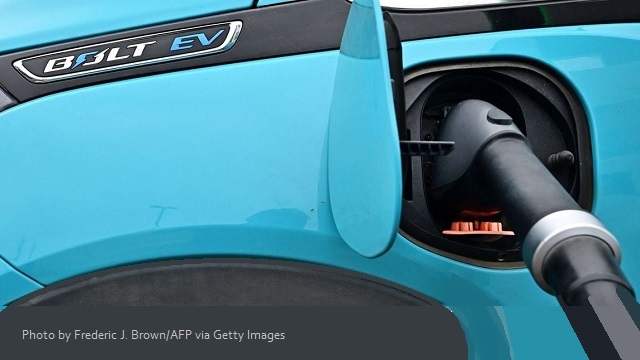DAVID BLACKMON: The One Simple Reason Electric Vehicles Are Doomed To Fail

In a story that seems to be becoming increasingly common as time goes on, The Western Journal reported this week about a Canadian EV owner experiencing some massive sticker shock over the cost of replacing the damaged battery in his electric vehicle.
Now, those of us who have always driven internal combustion engine (ICE) cars have at one time or another been faced with big repair bills for some of those vehicles. I can remember spending $4,000 on a new radiator for a 10-year-old Infiniti QX 50 with 220,000 miles on it that I just couldn’t bear to part with several years back. I did finally retire that wonderful vehicle when faced with the prospect of a $6,000 tag for a rebuilt transmission.
So, all cars will eventually cost you or your insurance company big money to repair — no one is saying that’s unique to EVs. But where EVs are concerned, it’s the magnitude of the price for replacing a damaged or worn-out battery that is often quite eye-popping.
I wrote a story in September about a fellow in the U.S. deciding to junk his paid-off EV when he got an estimate of $30k to replace his battery. We now see frequent reports that auto insurance companies are charging higher rates for EVs than for comparable ICE cars due in large part to this extravagant battery replacement cost.
If you think that $30,000 is extravagant, well, get ready, because it apparently isn’t even close to the worst-case scenario. Per the Western Journal, a Canadian man, Kyle Hsu, paid roughly $55,000 Canadian ($41,583 US) in 2022 to buy a brand new Hyundai IONIQ 5. But, less than a year later, Mr. Hsu was involved in what seemed to be a minor accident resulting in superficial damage to his beautiful EV.
Unfortunately for Hsu, it turned out that the battery protector cover on his car’s undercarriage was warped, a problem that could in certain instances cause the battery to explode. This meant that he would have to replace his car’s battery pack in addition to fixing its structural damage. Hsu says he was shocked when the estimate to replace the battery came in at $61,000 Canadian, or about $46,000 in US dollars. That’s almost $6,000 more than he paid for the car when he purchased it brand new.
Even worse, because the damage was caused by an accident, the bill was not covered by the car’s warranty, leaving Hsu with the alternative of filing a claim with his insurance carrier. But the resulting insurance implications were enormous, with Mr. Hsu facing a rate increase of up to 50% if he filed the claim. His only other choice would be to foot the repair bill himself and now have over $87,000 US dollars invested in a $41,000 car.
This is insane. This is not sustainable. The EV industry simply cannot have stories like this one popping up with increasing frequency and hope to sustain growing demand for its products.
When you combine horror stories like this one with:
- range anxiety that pops up any time the weather isn’t perfect;
- the lack of charging infrastructure;
- the unreliability of the infrastructure that does exist;
- the non-recyclability of the battery materials;
- the increasing restrictions on charging due to the massive load EVs place on the grid;
- and all the other significant issues EV makers have yet to address,
You see an industry that is almost doomed to failure before it really gets up and running.
I frequently remind readers that EVs have been around since the 1880s. They are not a new idea in any sense of that word. If they were really the answer to displacing ICE cars at societal scale, it seems likely they would have already done so. What we see popping up with increasing frequency now in the form of stories like this one are simply manifestations of the reasons why that has not already happened.
EVs today are what they have always been: A niche product, a luxury item suitable to fill discreet purposes for the upper 5% or so elites in any society. The technology simply is not there yet to make them anything more than that.
AUTHOR
DAVID BLACKMON
David Blackmon is an energy writer and consultant based in Texas. He spent 40 years in the oil and gas business, where he specialized in public policy and communications.
The views and opinions expressed in this commentary are those of the author and do not reflect the official position of the Daily Caller News Foundation.
RELATED ARTICLES:
DAVID BLACKMON: Climate Fascists Are On The March
Climate Radicals Block Major Highway In Netherlands
EDITORS NOTE: This Daily Caller column is republished with permission. ©All rights reserved.
All content created by the Daily Caller News Foundation, an independent and nonpartisan newswire service, is available without charge to any legitimate news publisher that can provide a large audience. All republished articles must include our logo, our reporter’s byline and their DCNF affiliation. For any questions about our guidelines or partnering with us, please contact licensing@dailycallernewsfoundation.org.

